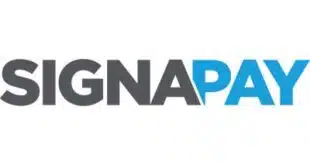Now that FedNow is available, the real work begins. But will the new system compete or collaborate with existing real-time networks?
FedNow, the real-time payments service from the Federal Reserve, launched with 35 participating institutions on July 20, almost 13 years after the Fed’s same-day automated clearing house settlement window debuted and eight years after the Fed released its framework for how faster payments might be structured in the United States. Potentially, more than 9,000 financial institutions are eligible for FedNow enrollment.
With the long-awaited launch done, FedNow’s next steps are expansion and refinement. It may help to recall that in 2011, eight months after the ACH same-day settlement debuted, only a handful of banks had opted for the service. Same-day ACH volume was nearly $1.2 trillion in the first half of 2023, according to Nacha, the ACH rule maker.
All depository financial institutions in the ACH network—numbering approximately 9,000—can send and receive same-day ACH payments, Nacha says.
Similarly, expansion of the FedNow network is at the top of the to-do list for most advocates of FedNow and real-time payments.
“FedNow is in the beginning stages of its lifecycle, so there is a lot of growth needed over the next 12 months to ensure that it’s regarded as a legitimate payment option alongside more well-established methods,” says Brad Goodall, chief executive and co-founder of Banked Ltd., a real-time payments services provider based in London with U.S. offices in Palo Alto, Calif.
Growth depends on success—and most observers have strong notions of what that will look like for networks like FedNow. “For instant payments to be successful in the United States, the networks need to have as many participants as possible,” says says Scott Anchin, vice president, operational risk and payments policy at the Independent Community Bankers of America, a Washington, D.C.-based trade group.
“Financial institutions, consumers, and businesses need to understand how instant payments can be used and how to prevent, detect, and mitigate fraud,” Anchin continues. “And transactions need to efficiently cross networks, so customers do not need to worry about whether they are transacting on FedNow or RTP.”
RTP, which launched in 2017, is the real-time payments network from The Clearing House Payments Co. LLC, a New York City-based payments company owned by 22 big banks. It hit 1 million transactions on a single day on Sept. 1.
“The question of FedNow is, is it going to provide a lower barrier of entry for small entities,” says Felix Shipkevich, founder and principal of Shipkevich PLLC, a New York City-based law firm and special professor of law at Hofstra University. “The question is not, how do you get to 300 but to 1,000 or 3,000 financial institutions.”
The Fed’s online list of FedNow participants, as of Sept. 1, showed 56 participating financial institutions, 20 certified service providers, and 15 settlement agents and liquidity providers.
Closely aligned with expansion, FedNow’s next steps will likely incorporate reaching smaller banks and credit unions, demonstrating the necessity for real-time payments, refining its capabilities, and, much further along, perhaps interoperability with RTP, observers say. The Federal Reserve declined to comment for this article.
‘The Biggest Bottleneck’
Getting more FedNow users involves getting the word out and educating financial institutions, especially smaller ones that may not have explored real-time payments options before.
“The key concern on everyone’s mind is time—how long will it take to get to ubiquity or at least significant volume,” says Miriam Sheril, head of product at Form3, a London-based payments provider. The United Kingdom has had a faster-payments service since 2008.
“The use cases and volume can’t really pick up until that [ubiquity] happens. The go-live is huge because it’s obviously the first step and the biggest bottleneck in the way of that adoption growth,” Sheril says.
The dilemma is that many banks, she says, are still skeptical. “They’re asking how long will it take and do they really need to spend their budget and jump on this bandwagon right now. I don’t think that anyone questions that long term it will get there.”
“It will be very interesting over the next year to watch the ramp-up in adoption among financial institutions,” says Bridget Hall, ACI Worldwide Inc. leader of real-time payments for the Americas.
“The market reaction appears to be quite positive, generating interest among financial institutions looking to connect to the FedNow service as well as from businesses across multiple industries looking to see how they can use FedNow,” Hall continues. “It’s exciting to see businesses begin recognizing the value of an instant-payment service.”
‘Extremely Positive’
What will it take for businesses to say yes to FedNow? Customer demand will, perhaps, be a big factor. It might start with a business wanting to pool funds into a single account or enable an irrevocable way for consumers to pay bills.
Another factor will be educating financial institutions, hence moves by the Fed such as a FedNow webinar the regulator held in August and a major Fed presence at Smarter Faster Payments 2023, the Nacha-organized conference for the automated clearing house industry, held earlier this year.
One banking segment where the FedNow message appears to be resonate is among community bankers.
“The market’s reaction to FedNow’s launch has been extremely positive, especially along community banks,” Anchin says. “ICBA and community bankers across the country have long appreciated the Fed’s unique ability to level the playing fields for community banks.”
FedNow comes five years after the first wide-scale U.S. real-time payments network debuted more than five years ago. RTP and FedNow are expected to aid each other in fostering knowledge of real-time payments and building the user base.
“FedNow will absolutely grow the volume and value of instant payments,” Anchin says. “While RTP already can reach a significant number of deposit accounts, FedNow will extend the reach of instant payment capabilities to financial institutions that could not or did not want to join RTP.”
For its part, the RTP network will benefit from FedNow. “What we found more than anything was additional positive reaction to RTP,” Elena Whisler, chief client officer at TCH. Having another national provider generates more interest. “It has been beneficial,” Whisler says. “It only brought more volume, more participants. More banks and credit unions are interested in real-time payments.” On July 22, the RTP network surpassed 500 million real-time payments since its start.
Whisler and her colleagues sell RTP to financial institutions, and many of them are considering both RTP and FedNow. “Most financial institutions see it as a need to receive on both,” she says. “It might depend on their client base. Most of [those] we speak [with] want both. They want to make sure they can receive money in the way their customers send it.”
‘Collaborate and Compete’
Most financial institutions use a third-party service provider to access services like real-time payments. At FIS Inc., a Jacksonville, Fla.-based services provider, many clients are opting for multiple providers, says John Wilson, product manager for instant payments.
“Each network offers unique capabilities and support for growing use cases such as government payments, support for other ‘instant-like’ settlement, expansion into cross-border payment and others,” he says. “Institutions see this as an opportunity to choose their path to better serve the markets they pursue.”
The choice in real-time payments services is generating more interest among financial institutions, says Justin Jackson, senior vice president and head of enterprise payments at Fiserv Inc., a Brookfield, Wis.-based core processor and payments provider.
“Many are looking for guidance as to whether it’s necessary to connect to just one of these networks or both,” Jackson says. “Generally, our recommendation to financial institutions has been that connection to both networks is going
to be important, at least in the near and intermediate term.”
While some bankers have questions about the necessity of adding a real-time payments capability, Jackson says the momentum in the market “seems to show that won’t be a challenge for long.”
Enrolling in both RTP and FedNow can help FIs support their clients. “The market is really big with very large banks and rather small ones on both ends of the spectrum,” Sheril says.
“Having two operators means a constant give and take to ensure equity, fairness and diversity in pricing, features, standards, [and so on],” she continues. “This is how the U.S. market works and it’s not a bad thing. It does at times slow us down—but overall, it works out in favor or the entire market.”
“Now that FedNow is live, the two services will both collaborate and compete to drive the best outcomes for the market at large,” Sheril continues. “It’s what we’ve seen in the high value and retail space—and I believe this is what we will see for instant payments as well.”
‘Quick and Seamless’
Eventually, the need to enroll in both services may diminish if an acceptable level of interoperability can be achieved. For now, FedNow is focused on expansion, with interoperability a possibility.
“Both FedNow and RTP have comprehensive feature sets, including request for payment functionality. While there is certainly room for enhancements, over the next year, the Fed and TCH should focus their efforts on three areas: adoption, education, and interoperability,” the ICBA’s Anchin says.
“Until the networks achieve technical interoperability, financial institutions will have to make a choice, manage two connections, or rely on service providers to bridge the gap and route transactions across networks,” he says. “Some financial institutions may choose to sit on the sidelines while the market sorts itself out. Both RTP and FedNow use industry-standard ISO 20022 messaging, which paves the way for the networks to interoperate.”
Certainly, there is a level of competition between RTP and FedNow. TCH and the Fed have a long history of complementary but competing products. Both have ACH and wire services, for example, Whisler says. “We’re natural competitors in the field with the overlay of being collaborative partners.”
The big question for many financial institutions, once they understand the value of real-time payments, is how to link to FedNow, says Fiserv’s Jackson. “The most frequent question we hear from financial institutions has simply been, ‘How can we get connected?’”
Another question: how long will it take for FedNow to reach most financial institutions. “We’ve heard some questions from other stakeholders about how long it might take for FedNow to achieve ubiquity, but the momentum we’ve seen in the market seems to show that won’t be a challenge for long,” Jackson says.
Expanding the number of enrolled FIs is paramount, observers agree. From there, the rest will likely follow. Currently, almost 200 financial institutions have signed agreements to use FedNow, according to an ABA Banking Journal interview with Ken Montgomery, FedNow’s program executive.
“The instant-settlement function of the FedNow rail offers an attractive draw for financial institutions and end users alike,” says FIS’s
Wilson. “Consumers and commercial clients are increasingly demanding [a] quick and seamless transaction process that allows them full access to these funds.”
Adoption and Volume
With the launch out of the way, the next step includes refinement. The addition of layers that will help to catalyze and open up the industry is key, says Form3’s Sheril.
“FedNow has shared their plans to focus on fraud controls and directory services—both key things that will help banks to implement more and more use cases,” she says. “RTP is doing similar things—as they just announced their expansion of the [request for payment] flows.” (For more on request for payment, see “How to Tap Real Time’s Potential,” September).
“All of this will help to not just drive adoption … but volume and use cases—which obviously is when we will see the tides turn and instant payments in the U.S. take off,” Sheril adds.
As ACI’s Hall says, “Launching FedNow isn’t the last step in the journey of realizing instant payments in the US. We’ll continue to see advancement on the use of instant payments.”






